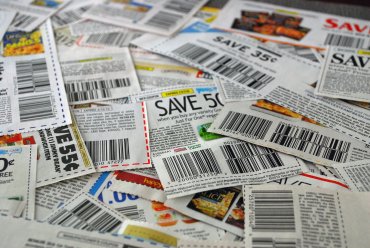For this edition of Autopsy of an Unfollow, we turn to a blog whose recent offerings have included a drunken rant about Tara Reade, a breakdown of a decision to purchase an app, a review of a John Grisham book and a…
Oh, sorry, wrong victim. The latest content cadaver to grace our autopsy table is a newsletter called the Skimm.
The good news for content creators is that because of Coronavirus and its restrictions, people are bored. The bad news for content creators is that because of Coronavirus and its restrictions, people are bored. I can only speak for myself, but by this point, I am kind of tired of social distancing memes, videos of celebrities washing their hands, YouTube personalities telling me to stay home and inspirational videos of remote musical collaborations. Will something new grab my attention? Maybe, but keeping it is another story.
The Skimm came into my life by sponsoring a site on which I needed to go to take care of an unrelated matter and then counting on the fact that I didn’t realize that the default setting on the browser was to subscribe to the newsletter. I was then greeted by a chipper email that began with the salutation “Oh, heyyyy” and promised “all the news and information [I] need to start [my] day.” I tried to frame it as a win-win: either my mornings would truly be “about to get a whole lot better. Promise” or I would have a new subject for an Autopsy of an Unfollow post.
The short reason for the unfollow is that I simply don’t need more online content in my life at this point. If I did, would I continue to follow the Skimm? Probably not.
Just as the Amazing SlowDowner came to me by a word of mouth recommendation, I would have been more likely to buy into new content that was recommended to me personally, rather than presented by a newsletter for which I accidentally signed up. Given that I opted in (or forgot to opt out, depending on how you look at it) to the Skimm, I tried to be open-minded. Would the Skimm provide me with something I couldn’t find elsewhere in cyberspace?
No.
While the Skimm can’t be faulted for trying to be witty or original with their presentation and attempts to engage, the newsletter simply doesn’t stand out. I don’t need another “Quote of the Day.” I don’t need a guide to creating the perfect bath, a list of eight books that my mom will love or “three totally random things that made us happy.” If I ever decided that I was in desperate need of a new background for a Zoom call, odds are I will be able to find one elsewhere.
I found the writing style of the original articles to be, if not condescending, definitely not geared toward challenging the reader. Typically the format is to highlight bullet points and then elaborate on them, concluding with “The Skimm” – a summary. By doing this, the Skimm authors are telling the reader what is important, instead of letting them decide for themselves.
Does a newsletter of curated and original content have a fighting chance in today’s media climate? Perhaps. The first step might be to cultivate a following with the goal of quality, not quantity (I don’t care that 7 million people already subscribe – Cardi B has hundreds of millions of followers and that doesn’t make me want to become one of them) that is likely to personally recommend the Skimm to others. Maybe this could be done by asking subscribers questions about their interests or by using algorithms to figure out what type of material will drive specific users’ engagement. Offering a weekly digest for those who don’t want a Monday – Friday newsletter could help too. Having a different delivery time, or at least options for a different delivery time, rather than first thing in the morning, would be a useful feature. It’s Internet 101 that looking at your phone first thing in the morning is bad for you (although given how many people, including the author, are guilty of that maybe that’s something the Skimm shouldn’t change.)
Then, of course, the newsletter would have the unenviable task of standing out and being heard above the noise. How to accomplish this is subjective, but as short as my attention span is, stories that draw me in and make me want to learn more, as opposed to going for the quick, easy digestible takeaway that is cleverly framed (or “skimm’d”) have proven to be of more long-term value for me. An example is “Lost Soul”, the SI Longform piece about Bison Dele; I didn’t know who he was before I read this article, but it pulled me in and made me care. With timeless themes as searching for one’s place in the universe and finding fulfillment in unlikely places while experiencing emptiness in what most people consider to be success, “Lost Soul” is a piece I’ve come back to multiple times. It’s like a high end restaurant that has a small but loyal base of repeat customers who spend more money than their casual dining counterparts might and then go on to recommend the experience to their friends; the Skimm is more like fast food that is easily produced and consumed but soon forgotten.
Maybe I’m missing out on a golden opportunity by not becoming a Skimm’bassador; maybe I’ll miss waking up to the peppy newsletter of information that has been Skimm’d for me. If so, I’ll just go back to the partner site and “forget” to opt out again.
 Photo:
Photo: 





